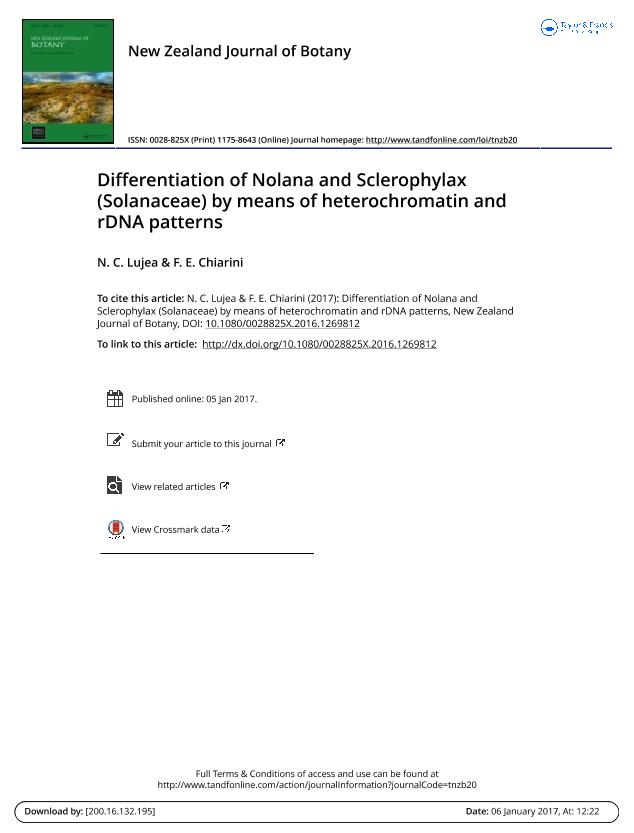Artículo
Differentiation of Nolana and Sclerophylax (Solanaceae) by means of heterochromatin and rDNA patterns
Fecha de publicación:
05/01/2017
Editorial:
Taylor & Francis
Revista:
New Zealand Journal of Botany
ISSN:
0028-825X
e-ISSN:
1175-8643
Idioma:
Inglés
Tipo de recurso:
Artículo publicado
Clasificación temática:
Resumen
Within Solanaceae, Nolana L. f. and Sclerophylax Miers are two genera that have deserved special attention because of their rare anatomical characteristics. However, they are poorly known from the cytogenetic perspective. In order to discuss their chromosome features in an evolutionary context, classical staining, chromomycin A3/4′ -6-diamidino-2-phenylindole (CMA/ DAPI) fluorescent banding and in situ hybridisation (FISH) with probes for the 18-5.8-26S and the 5S rDNA loci were applied to root tips of germinating seeds. All the species presented the chromosome number 2n = 24. Karyotypes were highly symmetric, with most chromosomes being metacentric and with a maximum of three submetacentric pairs in N. divaricata. The CMA/DAPI banding technique, assayed for the first time in Sclerophylax, showed CMA+ /DAPI− bands associated with nucleolar organiser regions (NORs) in the first metacentric chromosome pair in each species. The FISH technique (applied to four species of Sclerophylax and, for the first time, in one species of Nolana) showed that the 18-5.8-26S loci coincide with CMA+ /DAPI− bands. Three Sclerophylax species presented two pairs of 5S signals, whereas S. adnatifolia showed three. The rDNA loci resulted as asyntenic in Sclerophylax, but were localised in the same chromosome in N. divaricata. Despite the morphological peculiarities of Nolana and Sclerophylax, the chromosome number and karyotype features are consistent with the position of the two genera within the ‘x = 12 clade’, while the number and position of rDNA loci established the chromosome rearrangements, suggesting different evolutionary pathways with respect to their closest relatives, Lycium and Jaborosa.
Palabras clave:
Heterochromatin
,
Karyotype
,
Nolana
,
Rdna
,
Sclerophyllax
,
South America
Archivos asociados
Licencia
Identificadores
Colecciones
Articulos(IMBIV)
Articulos de INST.MULTIDISCIPL.DE BIOLOGIA VEGETAL (P)
Articulos de INST.MULTIDISCIPL.DE BIOLOGIA VEGETAL (P)
Citación
Lujea, Noelia Carolina; Chiarini, Franco Ezequiel; Differentiation of Nolana and Sclerophylax (Solanaceae) by means of heterochromatin and rDNA patterns; Taylor & Francis; New Zealand Journal of Botany; 55; 2; 5-1-2017; 163-177
Compartir
Altmétricas




